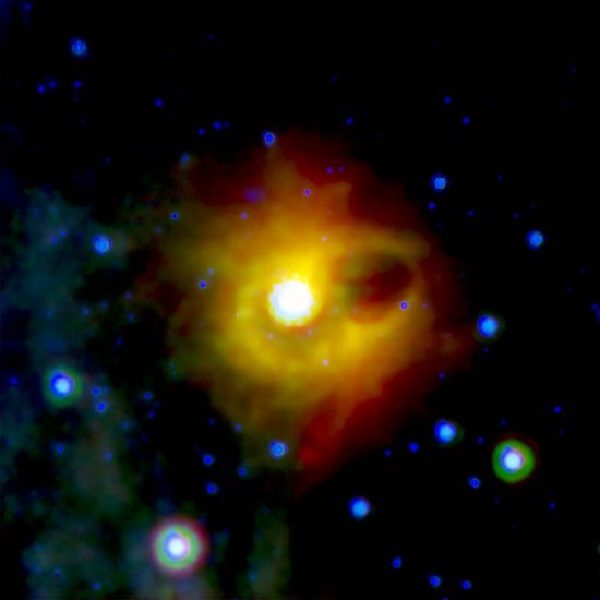
What are magnetars?
As conventional understanding suggests, neutron stars are created when massive stars collapse at the end of their life cycles. Gravity in those stars is said to be is so intense that they cannot resist the collapse, so electrons are squeezed into the nuclei that make up their structures. As astrophysicists state, those collapsed stars can become less than 100 kilometers in diameter, but can weigh 10^12 kilograms per milliliter. As they contract, angular momentum increases, resulting in rapid rotation. If a particular star is large enough, it can become a "magnetar".
Magnetars are usually identified as "X-ray pulsars" or "soft gamma repeaters". As conventional theories argue, they can reach magnetic field strengths measuring over 10^15 Gauss. Earth's magnetic field is about one-half Gauss, so these "magnetic pulsars" are surprisingly powerful.
Magnetic fields in magnetars are said to be concentrated at each pole, creating narrow beams of radio waves. Rather than relying on kinetic energy due to gravity, Electric Universe advocates assume that the oscillations in pulsars are due to resonant vibrations in electric circuits, instead of rapid rotation. Electricity stored in double layers is responsible for their energetic outbursts.
A double layer is defined as "...an electric charge separation region that forms in a plasma. It consists of two oppositely charged parallel layers, resulting in a voltage drop and electric field across the layer, which accelerates the plasma's electrons and positive ions in opposite directions, producing an electric current."
Pulsars (and, by extension, magnetars) are most likely concentrations of electricity focused by some kind of "dense plasma focus" effect. The dense plasma focus provides the mechanism by which cosmic electric currents can influence the evolution and morphology of space structures.
Electric Universe author and speaker Professor Donald Scott addressed the neutron star/pulsar issue this way:
One of the basic rules of nuclear chemistry is the 'zone of stability'. This is the observation that if we add neutrons to the nucleus of any atom, we need to add an almost proportional number of protons (and their accompanying electrons) to maintain a stable nucleus...The stable nuclei of the lighter elements contain approximately equal numbers of neutrons and protons, a neutron/proton ratio of 1. The heavier nuclei contain a few more neutrons than protons, but the limit seems to be 1.5 neutrons per proton. Nuclei that differ significantly from this ratio SPONTANEOUSLY UNDERGO RADIOACTIVE TRANSFORMATIONS that tend to bring their compositions into or closer to this ratio.Magnetars are another imaginary construct created by astrophysicists trying to explain energetic events without considering electricity.



Maybe their transformations are just like ours only in a later stage of development? So, maybe this is something we too can look forward to in the future? or at least a certain number of us with the proper charge credentials?